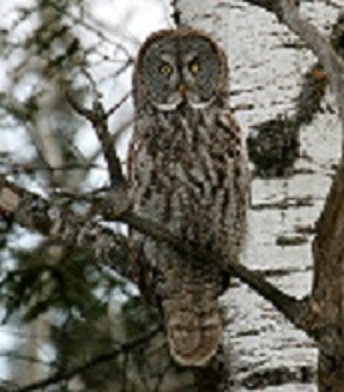

July 12, 2011 Issue #11 Published by Sue SkiffA NOTE FROM SUEMy landlady says that she misses the stories that I used to include in my e-zines. I haven’t felt much like telling stories, lately. I was all into making this an informative newsletter. However, I feel like the below article on behavior modification is so heavy with information that I need to write a nice little story. Trouble is, I don’t know what to write. I don’t really feel like writing one of my coyote encounter stories, as I suppose you might have expected from the last e-zine. What should it be? I’m trying to think. I think that maybe this will just have to be an amusing anecdote. Ah, I have one. Find it after the behavior modification article. WHAT IS DOG BEHAVIOR MODIFICATION?Many dog behavior specialists like to say that they use dog “behavior modification” to eliminate negative dog behaviors. This is especially true among behavior specialists that train solely using positive reinforcement. Indeed, behavior modification can be an effective way to correct “bad” dog behavior. I have also seen it used effectively with children, in my work in special education. Below you will find a description of how dog behavior modification works.My original dog training mentor, CW Meisterfeld, told me that he didn’t do dog behavior modification. He claimed that a modified behavior was still the same behavior. I remember him saying to me “a modified smoker still smokes.” I think that this stemmed from his being a recovering alcoholic. He had been taught in AA that once an alcoholic, always an alcoholic. While his point is valid, I quickly came to realize the flaw in his thinking. Properly applied, behavior modification doesn’t modify the behavior itself. What behavior modification does is modify an individual’s behavior. So, if you were to use behavior modification on a smoker, you would modify that person into a non-smoker, rather than modify the smoking itself. In actuality, Dr Meisterfeld did use behavior modification. In fact, he taught me to use it. He just didn’t realize that behavior modification was what he was doing. He was a master at taking a dog with behavior problems, and using positive reinforcement to turn it into a well-behaved dog. Thus, he modified the dog’s behavior. There are three components to behavior modification; they are antecedent, behavior, and consequence (ABC). An “antecedent” is something that happens that triggers a behavior. For instance, My dog, Emma, barks every time that she hears a doorbell. In this case, the sound of a doorbell is an antecedent to the behavior known as “barking.” A “consequence” is something that happens as a result of a behavior. For an animal that repeatedly displays a behavior, one assumes that the animal gets some sort of positive (in the animal’s mind) consequence for performing that behavior. For instance, a nervous dog that growls when approached by strangers may perceive that the consequence of those strangers backing away is positive. When the strangers back away, the dog no longer has a need to be nervous. So, the dog starts to act more and more threatening the more it is approached by strangers. It is in effect modifying its own behavior so that it can insure that it receives the positive reinforcement of strangers backing off. The aim of behavior modification is to teach an animal to display a behavior, which is different from an unwanted behavior, when it experiences a known antecedent. For instance, with the above nervous dog, one could start by having the dog do a simple command, like sit calmly when it sees someone walking towards it at a non-threatening distance. The approaching person would then turn away. Now the dog is getting what it wants by doing something acceptable. By gradually having the person approach from closer and closer distances as the dog sits calmly, and by having the dog experience that the person will turn away when it does so, the dog’s behavior becomes modified. Now, the dog sits calmly when approached, rather than growling. This is a simplification of a dog behavior modification technique called “Constructional Aggression Treatment (CAT),” which was developed by Jesus Rosales-Ruiz, and has been used successfully on many dogs. It is a relatively quick, positive way of turning around an aggressive dog. I hope that you learned something from this description of behavior modification. If you are interested in learning more about CAT, or behavior modification, in general, give me a holler. THE OWL THAT WASN’T AN OWLSo, you remember that last week, I wrote that I had spent some time living in Yosemite. What you may or my not know is that I was there studying great gray owls. These owls are gorgeous, and appear huge.
Great gray owls hoot; 8-11 hoots in a row. At the end of a series of hoots, they sound like they are running out of breath.. Females also make a lot of other sounds; most commonly they will make a “food begging” call to their mates during breeding season. It is a high-pitched “ooh-woo” sound, with the “woo” part being at a higher pitch than the “ooh. “ I have also heard them make strange, eerie, ghost-like sounds. They can be quite vocal. It is the “food-begging” call that makes the following anecdote. It seems that the University of California at Davis (UCD) professor, who headed up the research that we were doing, decided to hire a spotted owl biologist to help us catch great gray owls, and put radio transmitters on them. There was a problem with this. The spotted owl biologist was used to being able to walk right under a tree containing a spotted owl, put down a trap containing a nice rat, and duck behind a tree. Spotted owls, apparently, would be totally fooled, fly down for the rat, and get caught. However, great gray owls are not so easily fooled. I can’t remember the biologist’s name. I’ll call him Phil. So, anyway, Phil and I were walking through the forest near a meadow used by a pair of great grays, looking for the female. She had an old radio transmitter on her with a dead battery. We wanted to get it off, and give her a new one. Suddenly, we heard the unmistakable sound of a female great gray owl food begging call coming from a tree ahead of us. Phil, being used to spotted owls, moved towards the sound, and I followed. He was the expert on catching owls, after all. The call moved to another tree. We moved towards that tree. Over and over we did this moving towards the call, only to have it move to another tree. After a few minutes, we started seeing a stellar jay
I don’t remember how long we continued this pursuit of the elusive calling, but unseen owl, while the jay flew along ahead of us. I’d like to think that it wasn’t too long. But I do think that when the idea first hit us that it was the jay making the sound, and not an owl, we tried to dismiss it. However, it soon became clear that that was what was going on. The jay was mimicking a female great gray owl, and leading us on a merry wild goose (owl) chase. I imagine that that jay had a grand old time telling its friends about the stupid humans that it fooled that evening. What a good laugh it must have had. DAY TRAININGIt’s part of life in the 21st century. You get the kids off to school, work all day, pick the kids up at daycare, make dinner, and collapse. But, what about the dog? How do you find the time to train it to be a good citizen? Maybe, you managed to get your dog into a puppy kindergarten class, and then a basic obedience class. But, you really didn’t have time to practice the way the instructor wanted you to, and now, well now, it’s all kind of fallen by the wayside.You know that your dog can do better. Perhaps, your dog has some behavior issues. Whether or not they’re serious issues, they make your life harder, don’t they? So, what do you do when you’re already stretched, and you know your dog needs more? The answer is “day training.” Day training starts with a meeting with me where you describe your dog training needs, and your dog’s behavior issues. I then come to your house for an hour or so, on agreed upon days, to train your dog. You get to get on with your life, while your dog gets training and attention from a professional. And, that training and attention is customized to your and your dog’s exact needs. Maintaining what your dog learned is also built into the day training program. At the end of each week of training, I meet with you to go over what your dog has learned, as well as what you need to do to maintain the learning. After the agreed upon number of weeks has elapsed, I return for a follow-up or two, to make sure that you and your dog are on the same page, and everyone’s happy. For more information on day training, visit my dog training website I Need Your TestimonialsIf you have used my services in the past, please consider writing a testimonial for me. I will put it on my website for all to see how wonderful a writer you are. I’m giving you 3 ways to do this. The first way is to simply send me an e-mail, with your golden words included. Or, you can post a review on my Yelp Page Thirdly, you can post a comment on my Facebook page Thank you for your help in making Silver Lining Pet Services a success!Silver Linings is a publication of Silver Linings Pet Services, and is published for the purpose of marketing services. The current address of Silver Linings Pet Services is: 5555 Merritt Drive Concord, Ca 94521 |


